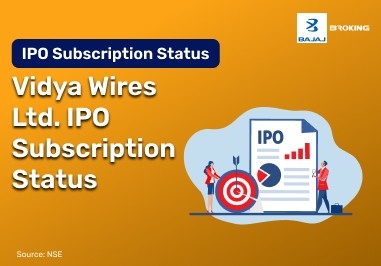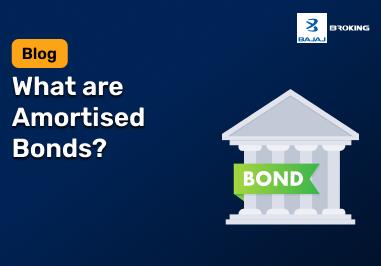If you’re a government employee in India, the General Provident Fund (GPF) is one of the core long-term savings options available to you. Managed by the government, the GPF offers you a fixed rate of interest and promotes disciplined saving over the course of your employment. The Ministry of Finance revises the GPF Interest Rate every quarter, and the rates are generally aligned with market movements. You contribute a portion of your salary every month, and the government credits interest annually. Understanding the current GPF interest rate, how it is calculated, and how it compares with other provident fund schemes can help you manage your retirement planning better and ensure your financial future is more secure.
What is GPF and how does it work?
The General Provident Fund (GPF) is a savings scheme available exclusively to government employees in India. If you're working in a government organisation, you are eligible to contribute a fixed percentage of your salary to your GPF account every month. This fund accumulates over the years and earns interest at the GPF Interest Rate set quarterly by the Ministry of Finance.
You begin contributing from your salary, and your employer may match it partially in some cases. The interest is compounded yearly and credited at the end of each financial year. You can also take loans and partial withdrawals for personal needs like housing, education, or medical emergencies, subject to specific conditions.
Your GPF balance is paid out in full along with interest at the time of retirement. The system ensures regular savings and helps you build a retirement corpus in a disciplined way. As long as you stay employed in a government role, your GPF account remains active, and you continue to earn based on the prevailing GPF rates.
GPF interest rate year-wise list
Knowing the historical trend of GPF Interest rate helps you understand how your long-term savings have grown over time. Here is a year-wise breakdown of recent GPF rates for Indian government employees.
Financial Year
| Q1 (Apr-Jun)
| Q2 (Jul-Sep)
| Q3 (Oct-Dec)
| Q4 (Jan-Mar)
|
2025–26
| 7.1%
| —
| —
| —
|
2024–25
| 7.1%
| 7.1%
| 7.1%
| 7.1%
|
2023–24
| 7.1%
| 7.1%
| 7.1%
| 7.1%
|
2022–23
| 7.1%
| 7.1%
| 7.1%
| 7.1%
|
2021–22
| 7.1%
| 7.1%
| 7.1%
| 7.1%
|
2020–21
| 7.1%
| 7.1%
| 7.1%
| 7.1%
|
2019–20
| 8.0%
| 8.0%
| 7.9%
| 7.9%
|
These figures are notified by the Department of Economic Affairs and apply to all subscribers under the GPF scheme.
Comparison: GPF vs EPF vs PPF
If you're deciding between saving through GPF, EPF, or PPF, it’s important to compare the features, eligibility, and returns of each. Here's how these schemes differ:
Criteria
| GPF
| EPF
| PPF
|
Eligibility
| Central and state government employees
| Salaried employees in private and public sectors
| Any Indian citizen
|
Contribution
| Mandatory (fixed % of salary)
| Employee and employer both contribute
| Voluntary
|
Interest Rate
| Fixed by Ministry of Finance
| Set by EPFO
| Set by Ministry of Finance
|
Lock-in Period
| Until retirement
| Until retirement or job change
| 15 years
|
Withdrawals
| Allowed with conditions
| Partial allowed with limits
| Partial after 5 years, full after maturity
|
Each serves a different purpose, and knowing these differences can help you choose or manage the right savings plan alongside your employment status.
How GPF interest is calculated
Understanding how your GPF Interest Rate applies to your monthly contributions will help you track your earnings better. The interest is not calculated on the full year’s contribution but follows a month-wise structure. Here's how the calculation works:
Your monthly contributions earn interest
Each deposit earns interest from the following month till the end of the financial year.
Compound interest applies annually
Interest is calculated every month but compounded and credited at the end of the financial year.
The previous year’s closing balance earns full-year interest
The balance carried from last year accrues interest for the entire current year.
Withdrawals reduce interest accrual
If you make a withdrawal, interest is only calculated on the reduced balance for the remaining months.
The rate is revised quarterly but applied uniformly
Even though the GPF rates may change quarterly, they are usually consistent and applied equally to all subscribers for the full year.
Benefits of investing in GPF
When you invest in GPF, you're not only securing retirement income but also benefiting from a disciplined savings structure with steady returns. Here's why GPF works well for many Indian government employees like you.
You get assured returns
GPF interest is fixed by the government and offers predictability compared to market-linked investments.
You benefit from compounding
Annual compounding means your corpus grows faster over time, especially if you stay invested for long.
You enjoy tax benefits
Contributions qualify for Section 80C deduction, and interest earned is tax-free.
You can access funds when needed
Partial withdrawals and loans are allowed for specific purposes like marriage, education, or medical needs.
Your capital stays safe
Backed by the Government of India, your GPF account offers capital protection throughout your service.
Steps to open a GPF account
If you’re a new government employee, opening a GPF account is part of your onboarding process. Still, knowing the steps helps you track and manage your contributions more effectively.
Verify your eligibility
Only permanent government employees are allowed to open a GPF account. Confirm your status through your department.
Submit the GPF nomination form
Fill out the prescribed nomination form specifying your nominee and percentage of allocation.
Get account number from DDO
Your Drawing and Disbursing Officer (DDO) or Accounts Officer will issue your GPF account number once forms are submitted.
Begin monthly contributions
A fixed percentage of your salary is deducted every month and credited to your GPF account.
Track your GPF statement annually
Ensure your contributions and interest are recorded correctly by checking your annual GPF statement from your department.
Conclusion
The GPF scheme remains a stable and government-backed retirement savings option if you're a government employee in India. With consistent interest rates, tax-free returns, and built-in flexibility through withdrawals and loans, it can support both your long-term goals and emergency needs. Knowing how the current GPF Interest Rate is determined, how the GPF works, and how to make the most of it empowers you to plan your future better. Whether you're new to the workforce or several years into your service, managing your GPF account effectively ensures that your retirement finances stay on track.














